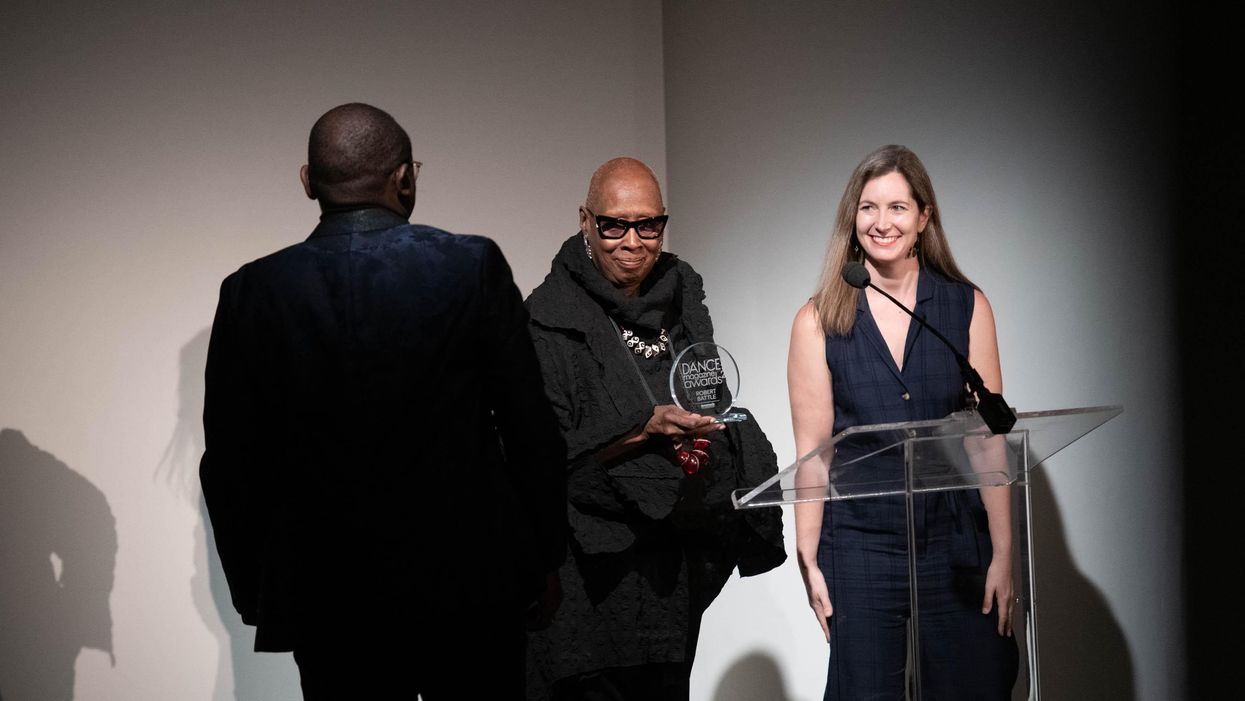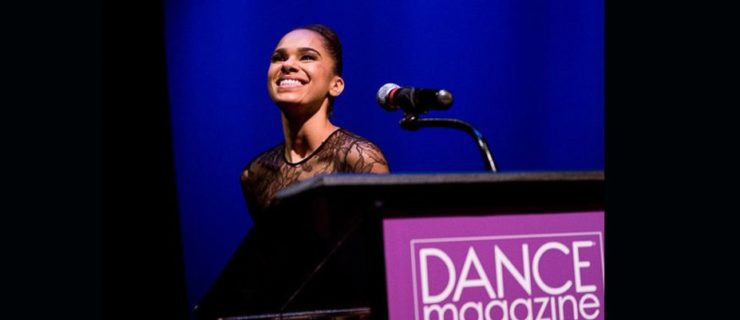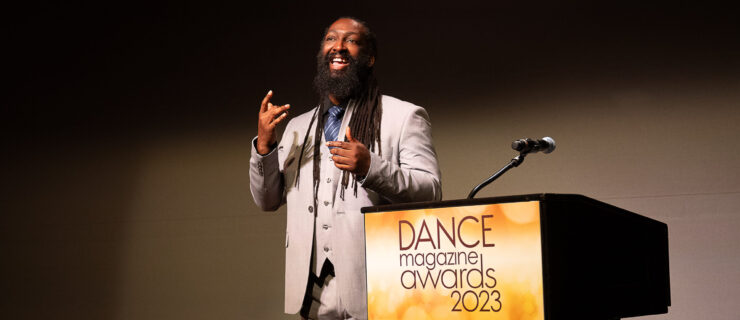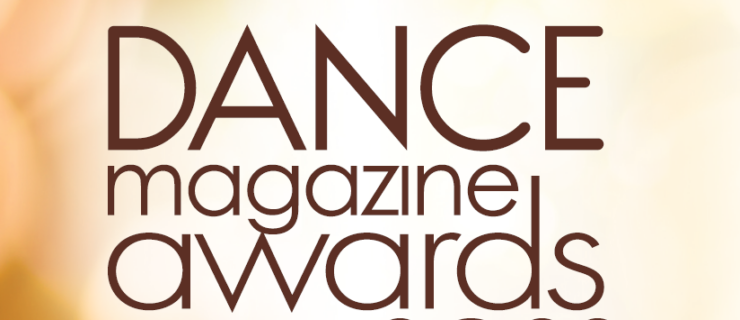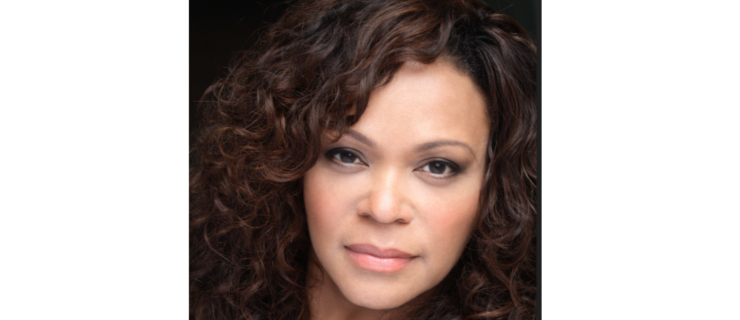The 2021 Dance Magazine Awards Illuminated Possibility and Community
Missed the livestream? Get access to the 2021 Dance Magazine Awards on demand
here.
One of my favorite things about the Dance Magazine Awards has always been the sense of worlds colliding—the way luminaries from different corners of our industry who you’d likely never see sharing a stage or a program come together for this celebration of dance’s living legends. This year’s edition, which combined pre-recorded and live, in-person speeches and performances, was no different. (Seeing 2021 Honoree Andy Blankenbuehler chatting with 1991 honoree Mark Morris before the ceremony was a particularly wonderful sort of surreal.) But more than ever, I was reminded that our field can be—and is—one big community held together by our shared devotion to dance.

This year’s event was held at the Guggenheim Museum, so a pre-show panel with past honorees Lar Lubovitch, Wendy Whelan and Mark Morris, moderated by Dance Magazine editor in chief Jennifer Stahl, fittingly centered on the relationship between dance and the visual arts. Morris pointed out that dance is a visual art (the first of his many quips throughout the evening), a sentiment Lubovitch echoed when he praised Whelan as a tremendous graphic artist in her own right “because of the exactitude of the drawings that she made” with her body as a dancer. Whelan noted that understanding what kind of brush you are as a dance artist (“A felt tip pen? Or a big, fat paintbrush?”) is an important part of being able to work well with choreographers.
In closing, Lubovitch remarked: “The biggest difference, and why our art is so precious, is because it’s the only art that really only exists while it’s happening, and that gives it a special kind of magic, as far as I’m concerned. The grace and integrity that it requires to commit yourself to something that is basically invisible except when you’re doing it requires a kind person and a kind character.” Leave it to Lubovitch to deliver a mic drop with such eloquence.

Sean Jones, Malik Kitchen, Adrian Lee and Thayne Jasperson in Andy Blankenbuehler’s Possibilities. Photo by Christopher Duggan
The importance of not just what our honorees have accomplished but how they’ve conducted themselves as they did so proved to be a key theme of the evening. Susan Stroman, presenting to Tony Award–winning choreographer Andy Blankenbuehler, recalled encountering him first as a performer who was always interested in what was happening on both sides of the table, a curiosity that has served him as both a choreographer and a director: “Regardless of where Andy is in the rehearsal room, he is a true collaborator. Always fearless, always approaching from a place of love, and always there to serve the work.”

Andy Blankenbuehler. Photo by Christopher Duggan
Blankenbuehler in turn thanked Stroman for leading by example, saying, “Choreographers have a tendency to turn into a mad scientist, tunnel vision person. Darkness can come easily because of the fear of not being able to make the sculpture move. My single hugest takeaway from my time with Stro is that she leads with generosity every step of the way. If there’s ever a time where I am good to the people around me, it is because there’s a Susan Stroman on my shoulder saying there is a better way to do it than to fall victim to the fear.” He continued to speak about how movie musicals and Dance Magazine were his sources of inspiration growing up in Ohio, giving him “a window to dream” of the possibilities of a life in dance. The piece he choreographed for the occasion was, fittingly, named Possibilities.
After a haunting, luminous video excerpt showing Tamara Rojo dancing Akram Khan’s Giselle—a work Rojo both commissioned and originated the title role in at English National Ballet—Julio Bocca shared how the ballet-star-turned-director has always strived for more, “looking behind the details,” whether as a dancer, director or mother. Rojo, in her speech, spoke about how teaching ballet classes from her kitchen during lockdowns for what ultimately amounted to 4 million people around the world had impressed upon her the importance that we share what we do, and highlighted the new initiatives at ENB aimed at opening access. She thanked the company’s supporters and the generosity of her teachers and colleagues over the years, concluding, “Enabling dancers and artists to achieve their potential is the greatest honor and the most beautiful thing I could have chosen to do with my life—other than being a mum.”

Tamara Rojo. Photo by Christopher Duggan
A video excerpt of Dormeshia in And Still You Must Swing drew whoops of delight from the audience. As Dianne Walker told the tap star in her presentation, “You swing like no one else.” She praised Dormeshia for the generosity of her teaching and the integrity she brings to the numerous artistic roles she fulfills, as well as in the rest of her life, where “her beautiful character and strength as a woman shines through.” She spoke of how they came from the same tap lineage, the importance of which was echoed by Dormeshia in her acceptance speech as she dedicated the award to the artists who paved the way for her. “This dance has truly been a blessing,” she said. “A blessing because it’s been everything I needed, when I needed it. It’s my friend, my therapy, my voice, my passport. The dance has always been there for me, so I do my best to show up for it.”

Alethea Pace and Richard Rivera in Pace’s Here goes the neighborhood… Photo by Christopher Duggan
The recipients of this year’s Harkness Promise Awards let their dancing do the talking. Alethea Pace performed a smart, exacting excerpt from her Here Goes the Neighborhood… with Richard Rivera, while Yin Yue showed a piece of her FoCo, dancing in sweeping unison with Grace Whitworth. Harkness Foundation for Dance executive director Joan Finkelstein presented each with their awards, which include grants and studio space (funded in large part by the net proceeds from the Dance Magazine Awards), and announced that the two of them would be back at the Guggenheim for a shared evening through Works & Process in March.

Grace Whitworth and Yin Yue in Yue’s FoCo. Photo by Christopher Duggan
Presenting to Akram Khan, Wendy Whelan spoke of how his work directs attention to finding shared humanity through collaboration: “He is a choreographer built for questioning and reinventing classical dance traditions for the 21st century.” The removing of cultural silos was echoed in his acceptance speech, during which Khan mused, “Something that my mother always told me as a child was, If some of us are unwell, then all of us are unwell. That is the context I apply to the themes I work on. I’m very interested in stories of the other, the ones that happen in the shadows. It’s really special for me that there is a recognition, to put a spotlight on the stories that are in shadow.”

Yannick Lebrun in Robert Battle’s In/Side. Photo by Christopher Duggan
In response to Yannick LeBrun’s heart-rending performance of Robert Battle‘s In/Side, Judith Jamison shook her head with a smile and asked Battle, “You see what you did to all of us?” She shared that by the time she’d seen that piece first performed by Battle’s company Battleworks, “I knew that I was on the ride of the Ailey company’s life.”

Robert Battle. Photo by Christopher Duggan
Battle’s wide-ranging, laughter-inducing speech (“You know he can preach,” Jamison drawled) was dedicated to the unsung heroes of his career. He told the story of his childhood piano teacher who was diagnosed with cancer while he was studying at Juilliard, and how he would help her with errands and chores when he was home on break. One day she took him to a department store and bought him five suits; when his mother asked her why, she said, “Someday he’ll be meeting kings and queens and presidents, and that boy’s going to need a suit.” He shared that all he could think of when, years later, he was at President Obama’s White House, was his fortune in being there: “What did I have? Courage and a suit. I don’t feel that much different tonight.”

Duke Dang and Caroline Cronson. Photo by Christopher Duggan
Virginia Johnson joked that Battle was “a tough act to follow” when she presented our Chairman’s Award to Works & Process. Johnson praised the presenter for how it “bursts with a sense of adventure” and continues to lead the way for dance performance through the pandemic. Works & Process producer Caroline Cronson and executive director Duke Dang used their acceptance speech as an opportunity to announce a new facet of its support for dance artists: LaunchPAD, a new initiative that will put $2 million towards providing “process as destination” fully-funded residencies over the next two years. As Dance Media CEO Frederic Seegal put it in his opening remarks, “I can’t imagine anyone has done more for dance than Duke and his team.”
Dancer-turned-medical-professional Dr. Wendy Ziecheck was also on hand to receive a special citation for her groundbreaking work in helping Works & Process develop safety protocols for its “bubble residencies” to allow dance artists to safely gather and work together during the course of the pandemic. She closed her speech with a plea for the leaders of the dance field, as experts in what they do, to look to the experts in medicine and science as we continue to navigate the challenges of COVID-19: “One of the themes that I’ve noticed in tonight’s program is, None of us are safe until everybody is safe.”

Nicholas Van Young (right) in an excerpt from his and Michelle Dorrance’s 2017 Works & Process Rotunda Project. Photo by Christopher Duggan
The evening closed with the fruits of a pre-pandemic Works & Process initiative: an excerpt from Michelle Dorrance and Nicholas Van Young’s 2017 Rotunda Project, which made clever (and humorous) use of the sonic possibilities of the museum’s famous architecture.
The joy of sharing that performance with the audience scattered around the rotunda’s ramp brought to mind a remark made by Judith Jamison earlier in the evening: “How precious this is, this thing we call dance. Sometimes you need that space to know how valuable your presence is in the world—not just to fulfill your ego, but to do it for others.”
Missed the livestream? Get access to the 2021 Dance Magazine Awards on demand
here.
